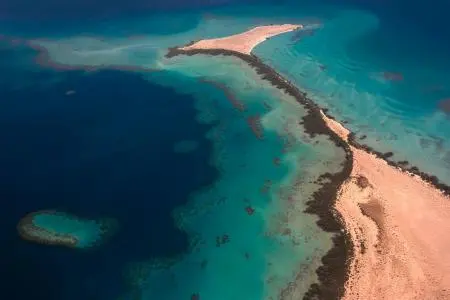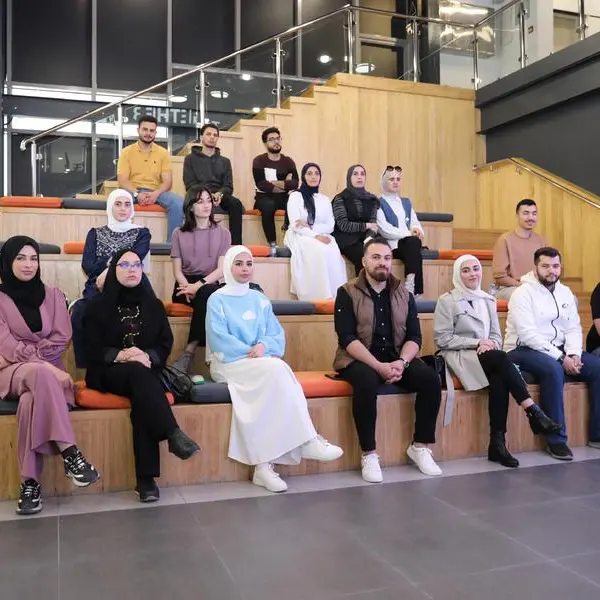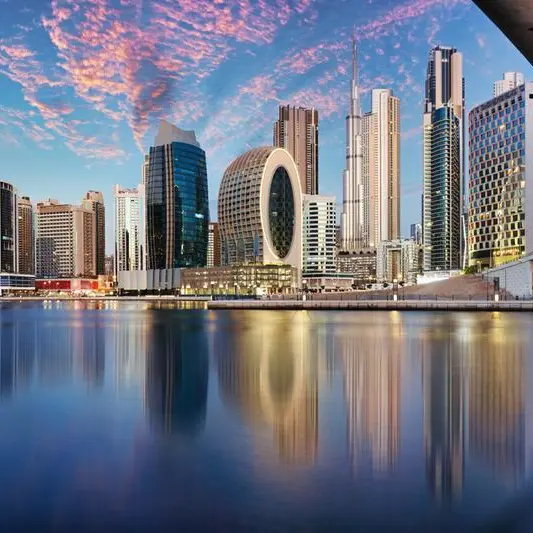PHOTO
RIYADH: A paper detailing the marine spatial planning models that informed master planning of The Red Sea Project, the world’s most ambitious tourism development, has been published in the scientific journal Frontiers in Marine Science.
The paper was co-authored by a multinational team of researchers including scientists from King Abdullah University of Science and Technology (KAUST), the National Technical University of Athens and the University of Thessaly, alongside executives from The Red Sea Development Company (TRSDC), the master developer behind the Project.
The paper describes how the research team used marine spatial planning to generate net positive conservation outcomes for the 2,081 km2 Al Wajh lagoon through the development of The Red Sea Project. The lagoon, which includes 92 islands, features valuable habitats including coral reefs, seagrass, and mangroves that are home to several species of global conservation importance, such as sea turtles and seabirds.
“TRSDC has committed to setting a new global standard in sustainable development and to sharing our learnings with the world,” said John Pagano, CEO of The Red Sea Development Company. “The results of this study demonstrate that, through careful design and planning, coastal development has the potential to enhance, rather than jeopardize, conservation.”
John Pagano is named as a co-author of the paper.
“Coastal development and marine conservation have traditionally been antagonistic goals, given that coastal development typically alters ecosystems and increases stress on the marine environment,” said Prof. Carlos Duarte, Tarek Ahmed Juffali Research Chair in Red Sea Ecology at KAUST. “Our study shows that, by embracing conservation as a primary goal from the outset, stakeholders involved in sustainable development can successfully reconcile the needs of development with the delivery of net positive conservation outcomes.”
Prof. Duarte is a co-author of the paper and a member of TRSDC’s Advisory Board.
The marine spatial planning exercise is an integral part of TRSDC’s development approach. It is intended to benefit the ecological state of the destination by achieving conservation outcomes superior to those of a “business as usual” scenario for an undeveloped site. The paper explored actions to achieve the targets a net conservation benefit of 30 percent, which exceeds the level of protection that might be expected from designating the entire lagoon as a Marine Protected Area.
The research team tested five conservation scenarios and used the results to develop a three-layer conservation zoning model to achieve conservation outcomes equivalent to the “business as usual” scenario in the presence of development.
The team then designed additional actions to remove existing pressures. Measures include beach cleaning campaigns, the regulation of fisheries to rebuild fish stocks, the expansion of biologically diverse habitats, such as mangroves, seagrass, and coral reefs, by 30%, and the use of electric-only marine and land vehicles to avoid pollution and noise.
Some of these measures are already underway. Last year TRSDC announced a Marine Debris Clean-up Program, which includes an initiative to hire people from the local population to conduct regular beach cleaning activities and mitigate the impact of marine litter originating outside the area’s boundaries.
TRSDC is also preparing a comprehensive plan for enhancing coral reefs, which includes the creation of multiple coral nurseries to interbreed corals with different degrees of tolerance for temperature.
The master plan for the development conserves 58% of the marine area of the site, with the development footprint being only 5% of the total area. The resulting conservation to development ratio of 10:1, the paper notes, is unprecedented in any documented coastal development plan.
Both the development zone and the area not assigned (37% of the marine area) will be subject to strict conservation and sustainability guidelines.
The paper concludes that the involvement of a multi-disciplinary team for scientists and developers was central to the success of the marine spatial planning simulation. The active participation of the development team with the environmental team avoided impacts through every step of the design process.
By taking a holistic view of the area and working collaboratively to allocate space for development and conservation, the team was able to ensure that development designs excluded any possible impact that could be avoided. This proved a more effective approach than the workflow in conventional development, where the environmental impact assessment is generally conducted after development design is complete.
“Conservation is at the root of sustainable development,” said John Pagano. “We believe that this innovative approach to destination design, grounded in marine spatial planning, can create a new relationship between tourism and the natural environment in the 21st century.”
© Press Release 2020Disclaimer: The contents of this press release was provided from an external third party provider. This website is not responsible for, and does not control, such external content. This content is provided on an “as is” and “as available” basis and has not been edited in any way. Neither this website nor our affiliates guarantee the accuracy of or endorse the views or opinions expressed in this press release.
The press release is provided for informational purposes only. The content does not provide tax, legal or investment advice or opinion regarding the suitability, value or profitability of any particular security, portfolio or investment strategy. Neither this website nor our affiliates shall be liable for any errors or inaccuracies in the content, or for any actions taken by you in reliance thereon. You expressly agree that your use of the information within this article is at your sole risk.
To the fullest extent permitted by applicable law, this website, its parent company, its subsidiaries, its affiliates and the respective shareholders, directors, officers, employees, agents, advertisers, content providers and licensors will not be liable (jointly or severally) to you for any direct, indirect, consequential, special, incidental, punitive or exemplary damages, including without limitation, lost profits, lost savings and lost revenues, whether in negligence, tort, contract or any other theory of liability, even if the parties have been advised of the possibility or could have foreseen any such damages.











